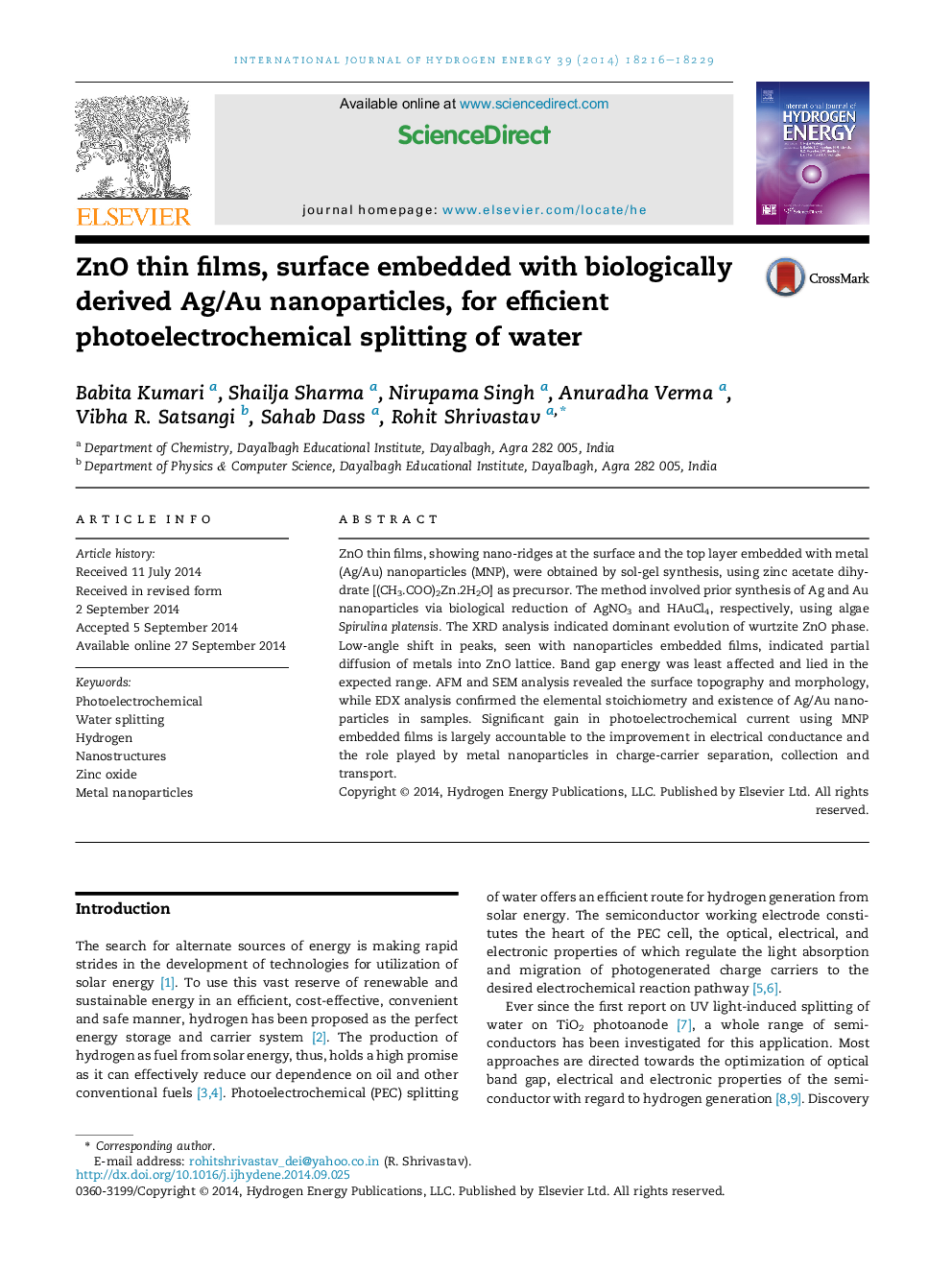| Article ID | Journal | Published Year | Pages | File Type |
|---|---|---|---|---|
| 1280831 | International Journal of Hydrogen Energy | 2014 | 14 Pages |
•Ag/Au nanoparticles synthesized via biological reduction, using Spirulina platensis.•Synthesized nanoparticles surface embedded on to ZnO thin films, obtained by sol-gel.•Samples characterized through XRD, AFM, SEM, EDX and Band gap analyses.•Significant gain observed in PEC water splitting current, using films prepared.•Effect attributable largely to efficient charge separation & transport.
ZnO thin films, showing nano-ridges at the surface and the top layer embedded with metal (Ag/Au) nanoparticles (MNP), were obtained by sol-gel synthesis, using zinc acetate dihydrate [(CH3.COO)2Zn.2H2O] as precursor. The method involved prior synthesis of Ag and Au nanoparticles via biological reduction of AgNO3 and HAuCl4, respectively, using algae Spirulina platensis. The XRD analysis indicated dominant evolution of wurtzite ZnO phase. Low-angle shift in peaks, seen with nanoparticles embedded films, indicated partial diffusion of metals into ZnO lattice. Band gap energy was least affected and lied in the expected range. AFM and SEM analysis revealed the surface topography and morphology, while EDX analysis confirmed the elemental stoichiometry and existence of Ag/Au nanoparticles in samples. Significant gain in photoelectrochemical current using MNP embedded films is largely accountable to the improvement in electrical conductance and the role played by metal nanoparticles in charge-carrier separation, collection and transport.
